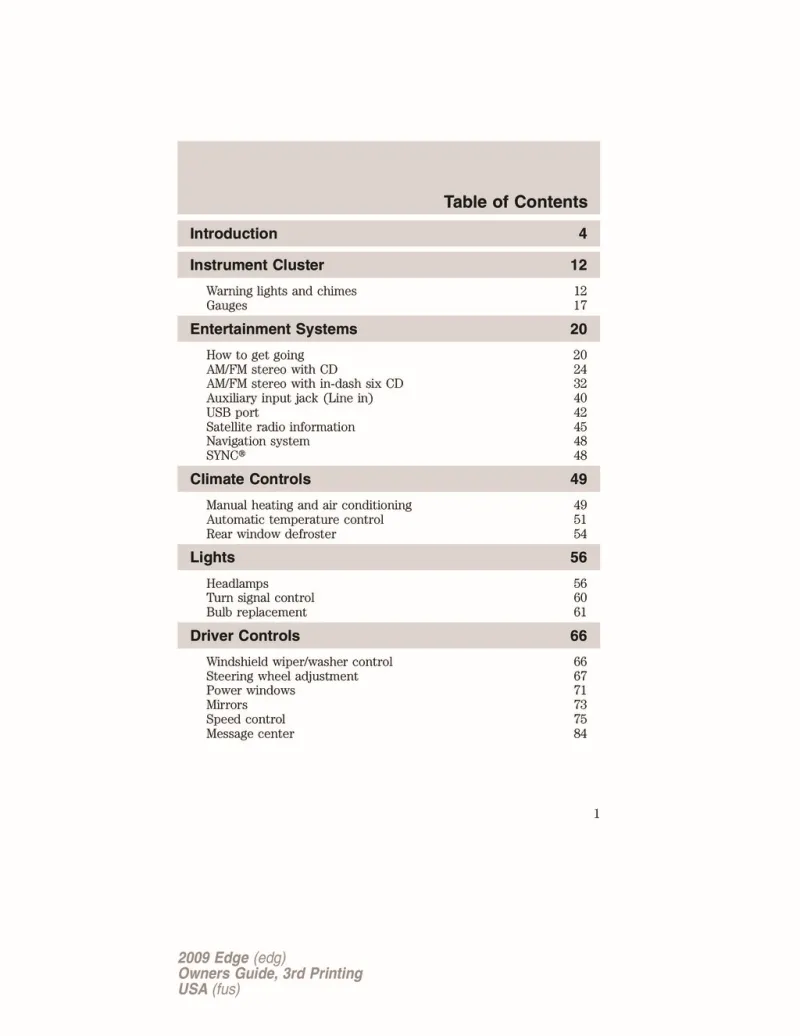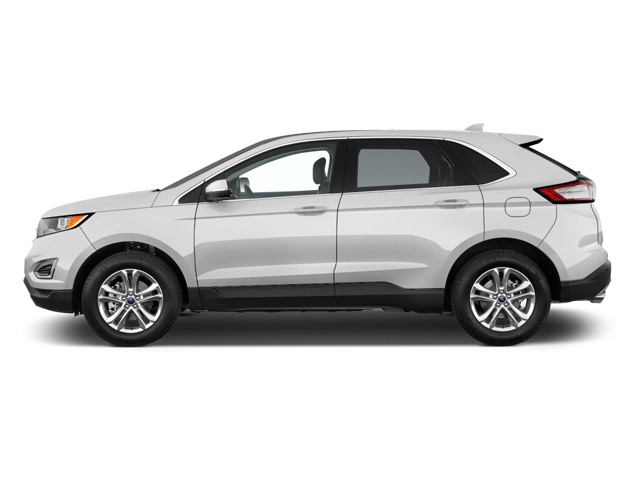2009 Ford Edge Owner's Manual

Table of Contents
2009 Ford Edge Overview
Introduction
The 2009 Ford Edge stands out in the midsize crossover SUV market, marrying style with versatility. Designed to accommodate both families and individuals alike, this vehicle boasts a roomy interior and a sleek exterior profile, reflecting Ford's commitment to modern design and functionality. With its balanced performance, comfortable ride, and abundant features, the Edge is engineered to meet the diverse needs of today’s drivers.
Powertrains
The 2009 Ford Edge offers two powertrain options. Standard is a robust 3.5-liter V6 engine, generating an impressive 265 horsepower and 250 lb-ft of torque. This engine is paired with a six-speed automatic transmission, providing smooth shifting and responsive performance. For those looking for enhanced traction, an all-wheel-drive option is available, ensuring optimal handling in various driving conditions.
Trims
The Ford Edge comes in several trims, each designed to cater to different preferences and budgets. The base SE trim includes essential features such as air conditioning, power windows and locks, and a six-speaker sound system. Moving up to the SEL trim adds upgraded audio and additional comfort features. The top-of-the-line Limited trim is equipped with leather upholstery, a premium sound system, and advanced technology, including navigation system and Bluetooth connectivity.
Features
The 2009 Ford Edge is packed with user-friendly features that enhance both comfort and convenience. Standard features include ample cargo space, a smooth ride, and various entertainment options. Optional upgrades like a panoramic sunroof, a rearview camera, and a premium sound system elevate the driving experience. Safety remains a priority, with standard features such as anti-lock brakes, stability control, and multiple airbags ensuring peace of mind on the road.
Owner's Manual
For new owners, the 2009 Ford Edge comes with a comprehensive owner’s manual, a vital resource that covers everything from maintenance tips to troubleshooting guides. This manual provides important information about the vehicle's features, warranty details, and safety guidelines, empowering owners to fully understand and optimize their driving experience.
User manual download
The Ford Edge owner manual for the 2009 model year is to be found in PDF downloadable format on this page. The owner manual for the model year 2009 is free and in English, but the repair manuals are usually not easy to get and may cost more.
Manual Questions
Fill the form below and someone will help you!

